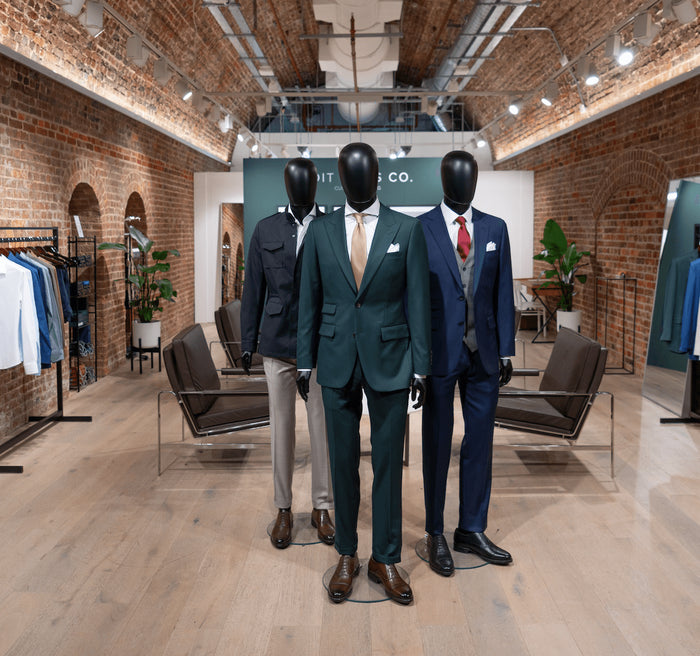With more workplaces embracing smart casual dress codes, many men are finding themselves unsure of what to wear each morning. Gone are the days of simply grabbing a suit and shirt. The transition to smart casual offers more freedom but also requires a thoughtful approach to dressing. Here’s how to build a versatile, stylish smart casual wardrobe.
Key Components of a Smart Casual Wardrobe
A smart casual wardrobe is all about balance—combining relaxed yet polished pieces. Here’s what you need to build your collection:
1. Bottoms: Chinos, Trousers, and Jeans
- Chinos: Versatile and comfortable, chinos in colors like navy, beige, and charcoal work for most occasions.
- Cotton Trousers: Slightly more formal than chinos, choose muted tones like grey or navy.
- Smart Trousers (Textured Wools): Flannel or hopsack trousers add sophistication when you want to elevate your look.
- Jeans: Dark washes in slim or straight fits are perfect for smart casual. Avoid overly distressed or light denim.


2. Shirts: Staples and Knits
- Cotton Shirts: White and light blue button-downs are timeless and versatile.
- Denim Shirts: Adds texture and depth to your outfit.
- Knits: Crew neck and turtleneck sweaters provide warmth and style, especially in neutral tones like navy or charcoal.
- Woven T-Shirts: Ideal for warmer months, opt for high-quality fabrics like Pima cotton or linen.


3. Jackets: Wool, Cotton, and Linen
- Textured Wool Jackets: Add a polished touch to your outfit while staying breathable.
- Cotton Blazers: A lighter option for warmer months, perfect for a casual yet refined look.
- Linen Jackets: Ideal for hot weather, pairing well with chinos or light trousers.


4. Essential Shoes: Key Styles for Smart Casual
The right shoes are essential to completing a smart casual look. Here are three key styles to invest in:
- Dark Brown Derbies or Oxfords: Versatile and polished, these shoes pair with chinos, wool trousers, or dark jeans. Dark brown is warmer and more approachable than black.
- Black Oxfords: Essential for adding formality when needed. They work well with darker trousers and structured jackets, perfect for business lunches or evening events.
- Brown Loafers: Great for more relaxed smart casual looks, especially in warmer months. Suede loafers add texture and pair well with chinos and lightweight fabrics.

These three shoe styles can be worn across business casual and even formal settings, making them versatile investments.
Mixing and Matching: Creating Smart Casual Looks
1. Color Combinations
Neutral colors like navy, grey, black, and beige can be mixed and matched easily. A neutral-colored jacket can be paired with a bold shirt or knit to make the outfit pop, while keeping the overall look grounded. Going for a monochrome look, such as all navy or all grey, can be quite striking and stylish. Just make sure you add texture variety (such as a wool jacket with cotton chinos) to avoid looking too flat.

2. Layering and Textures
Layering adds depth to your look. Try a textured wool blazer over a knit or a casual shirt under a jacket. Mixing fabrics like wool, cotton, and denim creates a visually interesting ensemble.


3. Shoes and Accessories
Complete your look with shoes like loafers, derbies, or oxfords, and simple accessories such as a matching leather belt and a stylish watch. A pocket square or slim tie can add an extra touch without being too formal.
Smart casual offers plenty of styling opportunities but requires some thought when it comes to mixing and matching. With essential pieces like chinos, cotton shirts, textured jackets, and versatile shoes (dark brown derbies, black oxfords, and brown loafers), you can create a wardrobe that works for nearly any occasion.
For more tips on building a modular, smart casual wardrobe, check out our Ultimate Guide to Building a Versatile Wardrobe.



 Singapore -
Singapore - 



